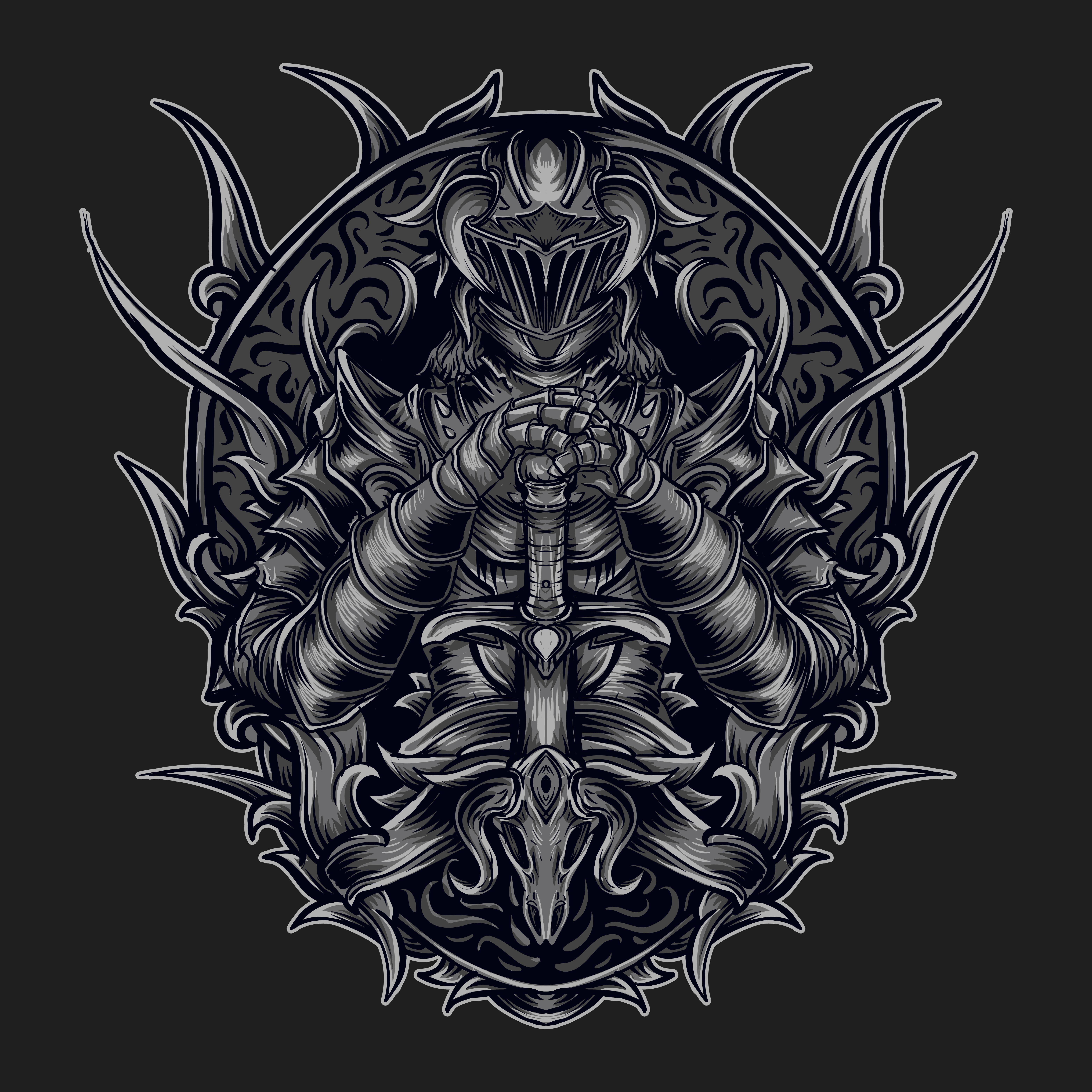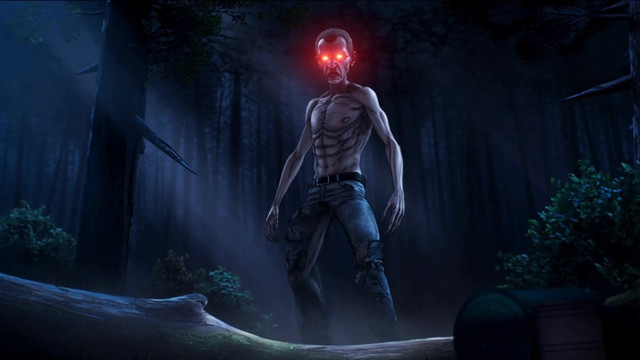HOME | DD
 EvolutionsVoid — Carnical
EvolutionsVoid — Carnical

#creature #ghoul #monster
Published: 2018-12-29 16:17:17 +0000 UTC; Views: 3762; Favourites: 58; Downloads: 0
Redirect to original
Description
Carnicals (or Ghouls, as some call them), are pretty easy to identify if you have the luck of spotting them before they gut you. They are often humanoid in shape, though grossly emaciated and elongated. The human body becomes sickly thin and its limbs stretch to unnatural proportions. The eyes will shrivel and recede in their sockets, while their gums swell to obscene sizes. The teeth will become like jagged fangs, while their fingers erupt into bony talons. These claws are thin and razor-like, while the skin will shrink and cling to its bones (save for the areas below its arms). There the excess skin from their sudden emaciation will form a stretchy membrane, which will hang from its arms like a patagium. Sharp quills will grow from its body, making it look kind of like a sick, molting bird. It is quite the emaciated and haunting look, like a desiccated corpse brought back to life. Though though its body may look fragile and its limbs twig-like, these creatures are not to be trifled with. It doesn't matter that it appears you could snap it in half with a singe blow, because often you won't even get the chance to realize you are in danger before it lops your head off.The word Carnical and Ghoul often translate to "corpse eater" or "carrion eater," and this hints at what causes humans to transform into these monstrosities. It isn't just eating a dead body, as we kind of all already do that. It has to be a human body, as this seems to occur during acts of cannibalism. The thing is, not everyone who feeds on the flesh of their own will transform. There is no real idea why this is so inconsistent, seemingly occurring at random. Some think it is a kind of disease, where the eater has to be infected with some kind of virus. Others suggest it has to do with the body they are eating, with some pointing towards the Splenius magus as a potential culprit. This same muscle allows magic and can be hijacked to alter one's body, so maybe eating one causes something similar. Ghouls tend to appear in more isolated regions, especially arctic lands and arid deserts. They can indeed form in more populous places, but it is in remote places with little food and life that really seems to set them off. I guess far out places with little resources is where humans are most likely to resort to cannibalism, thus creating more chances for one of these monstrosities to be born. In these environments, they prefer to hang out in sheltered areas, be it a dark forest, a gloomy cave or an abandoned settlement. They will find a spot that is sheltered from the rain, wind and snow, and they shall turn it into their lair. Here is where they shall hide during rough weather, and where they may store remains of their meals (mainly because Carnicals tend to take a dozen or so bites out of prey when they first meet them). It appears that they like to arrange their lairs in particular ways, with each individual having their own tastes. Things are not just thrown around at random, there appears to be some form of care to their dwelling. This seems to hint at a glimmer of intelligence, perhaps reflecting the person they once were.
When it comes to hunting, Carnicals rely on speed and surprise to take down prey. If you are somehow able to see one of these beasts on the prowl and survive, you will see why the Carnical is often mentioned as a kind of ghost or spirit. They move as fast as a gale, and they can seemingly vanish in the blink of an eye. A colleague of mine made the fitting comparison of a Ghoul and an insect, as their movements are quite similar. That strange, sudden twitch that they do as they scan the area, and then a sudden burst of speed that practically makes them invisible. In some cases, it almost feels like the Carnical can teleport, as it zips from position to position in a blur of speed. This speed makes them incredible hunters, and it is made even worse with their cruel intellect. While some monstrosities are driven purely by hunger and animal instinct, the Carnical appears to retain some form of human intelligence. Unfortunately, that piece of mind they hold onto is the same one that knows that the pained cries of offspring will always lure in a mother and that desperate dying prey will always follow the same predictable pattern. Ghouls are not smart in the realms of books and learning, but when it comes to tricking prey and hunting down food, they show gleams of cruel thought. When pursuing prey, they shall stick to the heights to avoid detection and will always seek to strike from behind. They can create distractions with snapping branches, mimicked sounds and thrown objects, giving them the few seconds they need to swoop in a gut a man. By using fear tactics, they can force prey into dead ends, or cause them to lose their way. Once their target is sufficiently disoriented, they move in for the kill. From the trees, they may launch themselves into the air and glide on their membranes of skin. This patagium can expand and flare open like a flying squirrel's allowing them to soar as if they were a bird. With their surprisingly light bodies, they can even use the wind and drafts to ascend or descend, and can cover a long stretch of land in the right conditions. With this tactic, they shall drop from above and envelop prey in their fleshy wings. Once embraced, they will use their claws and teeth to rip them to shreds. Prey will be messily devoured in a barbaric fashion, and what little remains will be taken back to the lair. On land, they shall attack in quick strikes, zipping back and forth to cut prey down one slice at a time. Though thin, their talons are sharp as a scalpel and can leave the finest of cuts. Combined with their blinding speed, a Carnical can slice open a victim without them even realizing it. It is said that it is so quick and painless, that warriors have continued fighting for minutes afterwards until they discovered they were missing a limb or bleeding to death.
In regions where Carnical arise, they are rightfully feared and avoided. The slightest evidence of these beasts near a settlement is enough to cause the population to flee. Some would suggest staying and slaying the creature, but many natives know that this is no easy feat. With their speed and wicked claws, Carnicals can easily outmaneuver any attacker and whip out gutting blades from any angle. A one-on-one fight is practically impossible to win, as they will attack from all sides and find a way to outflank you. Even when hunted in a group, they are hard to take down. They are very good at unnerving foes and causing them to make stupid decisions. Feinting blows, false strikes and mimicked cries are used to lure an individual away from the group, just enough that they can slit their throat and move onto the terrified survivors. Even if you can protect yourself from these attacks, Carnicals are incredibly resilient and can take a ludicrous amount of damage. It is said that you can only kill them by piercing their heart or taking off their head, nothing else will work. I have heard tales of a famous specimen up in the northern forests, who is referred to by the locals as "Sickle" (Due to a curved overgrown fang that supposedly juts from its upper jaw like a tusk). Legends and tales from survivors claim that Sickle has its entire abdominal cavity torn open and hollowed out, leaving a gaping bloody wound. Despite missing quite a few organs, this monster has plagued the land for decades and continues to do so today. Even if they are in good health or poor, Carnicals seem to be able to live for decades without any sign of slowing down or aging. The only way to bring an end to their terror is to kill them, but not many are willing to even try it. Even Conifer Dryads avoid Carnical territory, only taking up arms if the beast begins to raid their camps for food. Even with their tough bark and powerful weapons, Carnicals are terrifying foes to fight, and many Conifers prefer to just pack up camp and move to a safer place.
With their terrible origins and cruel ways, it is no surprise that Carnicals have left such an impact on people. Legends of these beasts and the heroes who fought them date back to centuries ago, which is why they can be found in so many ancient records. Dusty tomes and horror tales of old seem to star these monstrosities a lot, suggesting this plague is almost a constant. So much talk of them raiding graveyards, tearing through tombs and haunting empty towns. They kill everything they see and devour everything they kill. These beasts are the epitome of avarice and hunger, gorging themselves on blood and meat without pause or hesitation. Some stories claim they can devour an entire bull in one sitting, and then go looking for more! I got to say, after a long expedition, I sometimes feel the same!
Chlora Myron
Dryad Natural Historian
Related content
Comments: 9

👍: 0 ⏩: 1

👍: 1 ⏩: 0

👍: 0 ⏩: 1

👍: 0 ⏩: 1

👍: 0 ⏩: 1

👍: 0 ⏩: 1

👍: 0 ⏩: 0

I giggled a bit at that joke, but it's a wendi-no-go.
👍: 0 ⏩: 1

It appears that it is more of a wendi-d'oh now.
👍: 0 ⏩: 0

























